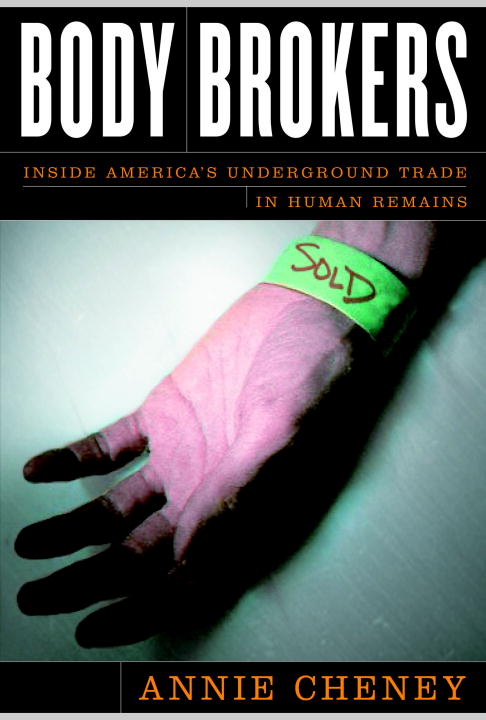
Body Brokers
Inside America's Underground Trade in Human Remains
داخل تجارت زیرزمینی آمریکا در خاطرات انسانی
فرمت کتاب
ebook
تاریخ انتشار
2006
Reading Level
6
ATOS
7.7
Interest Level
9-12(UG)
نویسنده
Annie Cheneyناشر
Crownشابک
9780767921510
کتاب های مرتبط
- اطلاعات
- نقد و بررسی
- دیدگاه کاربران
نقد و بررسی

January 30, 2006
Readers will be horrified by this carefully researched exposé revealing that the trade in corpses for medical research and education didn't go out with 19th-century grave robbers. Cheney, who won a Society of Professional Journalists award for the Harper's
article that gave rise to this book, describes the case of Arthur Rathburn, a morgue attendant at the University of Michigan Medical School, who supplied body parts to the American Association of Clinical Anatomists and other organizations until he was caught and fired. Families who donate the bodies of loved ones to medical schools are misled into believing that no profit will be made from their gift, but many schools—the University of Kansas and Tulane, among others, according to the author—generate income by selling surplus corpses to the highest bidders. Cheney also covers the sale of transplantable tissue for patients undergoing surgery; with no government oversight of this "billion-dollar business," such tissue can be diseased, resulting in bacterial infections and even death for recipients. Occasionally, melodramatic narrative pads the substance, but Cheney reveals a disturbing medical underworld that deserves attention.

April 15, 2006
How do doctors practice for surgery? Medical seminars, as well as research studies and corporations that manufacture tissue-based products, need human bodies and body parts. Journalist Cheney expands on her Harpers article, The Resurrection Men, to explore the procurement of these parts. Unlike Michele Goodwin in her recent Black Markets: The Supply and Demand of Body Parts, Cheney is not examining transplantable organs and tissue, but body parts used for research, practice, and commercial uses. Apparently, these uses are not well regulated and have developed their own market with vague legality and ethics. Donors who think their bodies will reside at a medical school may end up having their bones turned into paste; family members paying for a cremation might not receive the whole body back in the urn. Morgue, crematorium, and funeral workers have ample opportunity to remove body parts and may be tempted by the promise of quick profits. Writing in a narrative, easy-to-read style, Cheney introduces these real-life characters and their bizarre industry. Creepy and fascinating, this is recommended for public and academic libraries.Elizabeth Williams, Washoe Cty. Lib. Syst., Reno
Copyright 2006 Library Journal, LLC Used with permission.

Starred review from March 1, 2006
Here's one with the potential to keep folks up nights, wondering whether the urn on the mantel contains 100-percent Uncle Fred or a blend. Before journalist Cheney began an assignment for " My Generation" magazine, she had never suspected there might be diverse career opportunities for cadavers, that whatever one wants to be when one grows up, options continue to exist postmortem. But consider the ever-popular organ donor program. And then there's the option of donating one's body to a medical school for the betterment of mankind through science. Once that latter choice is made, Cheney learned, alternatives multiply, and a corpse can follow one of several roads. On a lower thoroughfare, big bucks are waiting for the cold-blooded entrepreneur ready to carve human bodies up like chickens and parcel them out to the highest bidder for such uses as military bomb test dummies, lifelike operative subjects for medical seminars, and resource troves for the machine-tooling of bones into orthopedic apparatus. Even if one never willingly donates one's body, there are enough unscrupulous morticians and morgue workers who will surreptitiously carve out an ulna or a femur and replace it with a PVC pipe, then sell the goods on the not-so-open open market. This is a chilling expose of the grisly industry of body trading.(Reprinted with permission of Booklist, copyright 2006, American Library Association.)

























دیدگاه کاربران